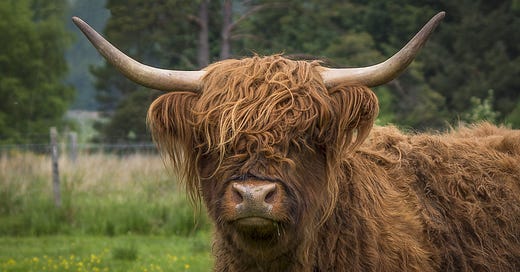Choose free-range foods for better health
For cardioprotective, anti-inflammatory and anti-tumour properties you won't find in factory farmed meat.
Meat, dairy, fish and eggs are the most nutrient-dense foods on the planet. But even then, the quality and quantity of the nutrients they offer depend on the diet of the animals in question. Therefore, it makes sense to choose food from livestock that has eaten well.
Meat and dairy
Meat may be sourced from animals that are grass-fed, pasture-fed or concentrate-fed. Grass-fed does not necessarily mean that the animal grazed on grass all its life. Nor was it necessarily exclusively grass-fed – the animal may have been supplemented with or finished on concentrate feed. ‘Grass-finished’ is a term that usually means that the animal ate grains all its life but spent the last few weeks on pasture.
Concentrate feed, as given to intensively farmed livestock that see little light of day, is composed mainly of grains and soya. This fattens them up, in the same way grains and soya fatten up humans.
In the US (but not the UK), intensively farmed livestock are routinely given antibiotics to stop them from getting sick. They eat no grass or forage.
Pasture-fed is a big step up from grass-fed: the animal grazes on land with grass and forage and whatever else happens to be growing wild, and is never fed concentrate feed, or anything genetically modified. Animals that are exclusively pasture fed express behaviour that is as close to that of animals in the wild as it is possible to achieve on a farm.
As far as nutrient density goes, the broader that range of pasture the better. In addition to vitamins, minerals, fats and protein, grass- and pasture-fed animals consume - and later provide us with - phytonutrients. Phytonutrients are plant chemicals and include carotenoids and phenols. Some of these phytonutrients are antioxidants and have anti-inflammatory, anti-carcinogenic and cardioprotective properties.
‘Grazing livestock on plant-species diverse pastures concentrates a wider variety and higher amounts of phytochemicals in meat and milk compared to grazing monoculture pastures, while phytochemicals are further reduced or absent in meat and milk of grain-fed animals.’
These phytonutrients, consumed by grazing animals, are then concentrated in meat, milk and eggs. You’ll be lucky to find them in grain-fed meat.
Grass-fed beef offers a ten-fold higher level of the carotenoid beta-carotene than grain-fed beef. Beta carotene plays an important role in protecting the body, including the brain, from damage from oxidation. Oxidation contributes to heart disease, cancer, and many other chronic diseases, including dementia. You can tell if your meat (and butter) is carotenoid-rich, as these phytonutrients impart a slight yellow tint to the fat.
‘Conversely, these phytonutrients are typically undetectable or present in lower concentrations in meat and milk from animals fed grain-based concentrates in confinement.’
Keep reading with a 7-day free trial
Subscribe to Your Nutritionist Recommends to keep reading this post and get 7 days of free access to the full post archives.




